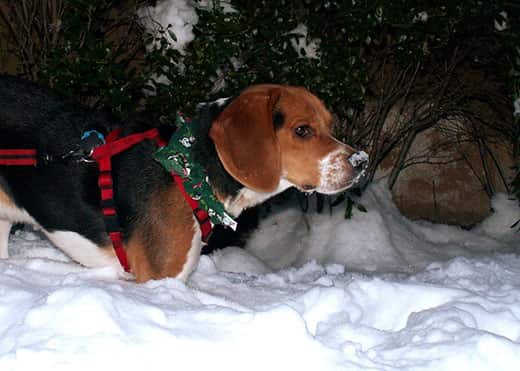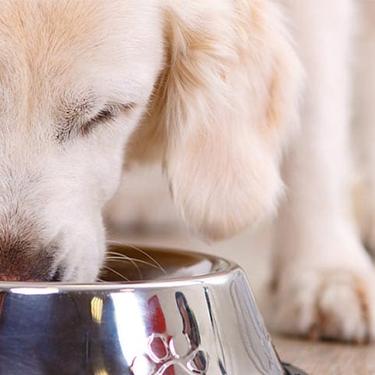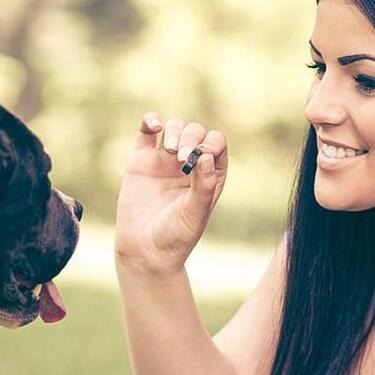
-
Find the right food for your pet
Take this quiz to see which food may be the best for your furry friend.
Find the right food for your pet
Take this quiz to see which food may be the best for your furry friend.
Featured products
 Small & Mini Savory Stew with Chicken & Vegetables Dog Food
Small & Mini Savory Stew with Chicken & Vegetables Dog FoodA delicious complement to the nutrition of Science Diet Small & Mini 7+ dog food
Shop Now Adult 7+ Perfect Digestion Chicken, Whole Oats & Brown Rice Recipe Dog Food
Adult 7+ Perfect Digestion Chicken, Whole Oats & Brown Rice Recipe Dog FoodScience Diet's breakthrough nutrition supports ultimate digestive well-being & healthy microbiome for dogs age 7+
Shop Now Adult Healthy Cuisine Roasted Chicken, Carrots & Spinach Stew Dog Food
Adult Healthy Cuisine Roasted Chicken, Carrots & Spinach Stew Dog FoodDelicious roasted chicken paired with tender vegetables in a succulent stew
Shop NowFeatured products
 Adult Savory Entrée Can Variety Pack Cat Food
Adult Savory Entrée Can Variety Pack Cat FoodPrecisely balanced nutrition with the delicious taste of savory minced chicken to help fuel the energy needs of cats during the prime of their life
Shop Now Adult 7+ Senior Vitality Chicken & Vegetable Stew Cat Food
Adult 7+ Senior Vitality Chicken & Vegetable Stew Cat FoodImproves Everyday Ability to Get Up & Go
Shop Now Adult 7+ Tender Tuna Dinner Cat Food
Adult 7+ Tender Tuna Dinner Cat FoodWith delicious chunks in a decadent gravy
Shop Now -
Dog
- Dog Tips & Articles
-
Health Category
- Weight
- Food & Environmental Sensitivities
- Urinary
- Digestive
- Joint
- Kidney
-
Life Stage
- Puppy Nutrition
- Adult Nutrition
- Senior Nutrition
Cat
- Cat Tips & Articles
-
Health Category
- Weight
- Skin & Food Sensitivities
- Urinary
- Digestive
- Kidney
-
Life Stage
- Kitten Nutrition
- Adult Nutrition
Featured articles
 Do Dogs and Cats have Belly Buttons?
Do Dogs and Cats have Belly Buttons?Learn whether cats & dogs have belly buttons like humans, what the function is, and if there are any health concerns associated with it.
Read More Does My Pet Hate Me?
Does My Pet Hate Me?Learn tips for bonding with your pet if you've ever thought, 'My dog doesn't like me, or 'Why do I have a standoffish cat?'
Read More Why Are Dogs and Cats So Cute?
Why Are Dogs and Cats So Cute?If waggy puppy dog tails and furry kitten yawns make you swoon, you're not alone. Why are cats so cute? And, dogs too! Let's find out!
Read More -


Walking your dog in the fall and winter can be challenging. Not only are the temperatures colder and the weather not always pleasant, but it also starts getting darker much earlier. As the days grow shorter and the nights grow longer, you may find that walking your dog at night is something you can't avoid. While walking with your dog after dark can be a fun adventure, nighttime also brings potential hazards that regular safety practices aren't enough to address on their own. Ensure a safe walk for you and your dog by following these tips for dog walking in the evenings.
Challenges of Walking Dog at Night
Walking your dog after dark brings challenges that you don't typically have to deal with during the day. Not only is it harder to see where you and your dog are going, but it's also harder for you to be seen by drivers, joggers, bike riders, and other types of traffic. All of which greatly increase the risk of accidents and/or injury. Whether you're walking on city sidewalks or country roads, predators (both the four-legged and two-legged variety) can also be a concern.
Less dangerous animals that come out at night may also pose a problem. While your dog might be conditioned to ignore common daytime wildlife, such as squirrels or rabbits, the novelty of seeing and smelling a raccoon or opossum might excite your pup so much that he becomes difficult to control. This could lead to a disaster if he manages to get out of his collar or yank the leash out of your hands.
Dog Walking Safety
Practicing proper night safety can not only reduce the risks associated with walking your dog at night, but also help you and your dog feel more confident about going on walks after dark. Here are some safety tips you can follow, broken down by category.
Increasing Visibility
To increase your own ability to see, consider wearing a headlamp, like those worn by climbers and cavers, instead of carrying a flashlight. This will free your hands to better control your pooch and also allow you to pick up after him without compromising your vision or grip on the leash. Beyond this, it's also important that drivers and cyclists see you at night. When it comes to increasing visibility for you and your pup, avoid wearing dark clothing and, if possible, stick to well-lit sidewalks and pathways. Here are some additional items you can use to make you really stand out:

- Reflective gear, including reflective vests, wrist and leg bands for both yourself and your dog, a reflective collar and leash, reflective dog tags
- A light-up leash and collar
- Light-up shoes for yourself
- Wearable lights that attach to your dog's collar or harness
- Glow sticks, or bracelets and necklaces made out of neon lights
Traffic Considerations
Even with plenty of light and reflective surfaces, you should still exercise caution when it comes to traffic. Keep an eye on approaching cars and be ready to move out of the way of those who aren't keeping an eye out for you. If you have to walk in the street, be sure to walk against oncoming traffic instead of moving with it, so you can see cars coming down the road. Try to stick to areas that are well-lit and offer plenty of visibility for both you and passing traffic.


Tasty Tips
Encountering Predators
One of the scariest things about walking at night is the potential of meeting a predator. Depending on where you live, potential dangers might include coyotes, wolves, mountain lions, or even bears. There can also be a risk of running into people who are up to no good. If possible, use the buddy system and bring a friend or family member along on your walk. If your dog is large enough to be intimidating, you might feel that he's enough to fend off any potential attackers, but keep in mind that, as his guardian, it's your job to protect him, too. Consider any potential predators you might run into and how to best defend yourself and your dog from an attack. Arm yourself accordingly, such as carrying a can of bear spray if you're walking in bear country, for example.
Other Things to Consider
While there's no need to be fearful while walking your dog after dark, it's important to stay on guard and remain alert. This means leaving the headphones at home, advises Dogster. And while you should bring a fully charged phone with you in case of emergencies, be sure you're paying attention to your dog and your surroundings and not to your phone screen.
Because dogs tend to be hypersensitive to the moods and attitudes of their people, your dog might pick up on your heightened awareness, which could make him more excitable than usual. Between this and the added excitement of seeing or smelling nocturnal wildlife, it's very important to keep control of your dog to prevent him from running into traffic or getting lost as he chases after a critter that catches his attention. If you normally give him a long lead or use a retractable leash during the day, for evening walks you should switch to a shorter lead and keep him close to you at all times.
While evening walks with your best four-legged friend can be a lot of fun and something you look forward to at the end of the day, staying alert and safety conscious doesn't have to put a damper on your enjoyment. Staying visible to others and aware of your surroundings will go a long way to ensure your night walks will remain enjoyable. Being prepared to handle any potential trouble that approaches yourself or your dog can actually make you more confident, an attitude that will help your dog relax and enjoy this special time he gets to spend with you.


Jean Marie Bauhaus is a pet parent, pet blogger, and novelist from Tulsa, Oklahoma, where she usually writes under the supervision of a lapful of fur babies.
Related products
Related articles

Learn how today's wet dog food blends have gotten a face lift, and how you'll provide your dog the nutrition he needs in the form he loves.

Learn about choosing the right dog food to help ensure your adult dog will receive the correct balance of nutrition.

Proper nutrition for your pregnant or nursing dog is vital to her and her puppy's health. Learn what you should do provide her with the proper nutrients.

Learn the the dangers of feeding your dog chocolate, which types are most dangerous, and what to do if you discover that they have consumed chocolate.

Put your dog on a diet without them knowing
Our low calorie formula helps you control your dog's weight. It's packed with high-quality protein for building lean muscles, and made with purposeful ingredients for a flavorful, nutritious meal. Clinically proven antioxidants, Vitamin C+E, help promote a healthy immune system.
Put your dog on a diet without them knowing
Our low calorie formula helps you control your dog's weight. It's packed with high-quality protein for building lean muscles, and made with purposeful ingredients for a flavorful, nutritious meal. Clinically proven antioxidants, Vitamin C+E, help promote a healthy immune system.

